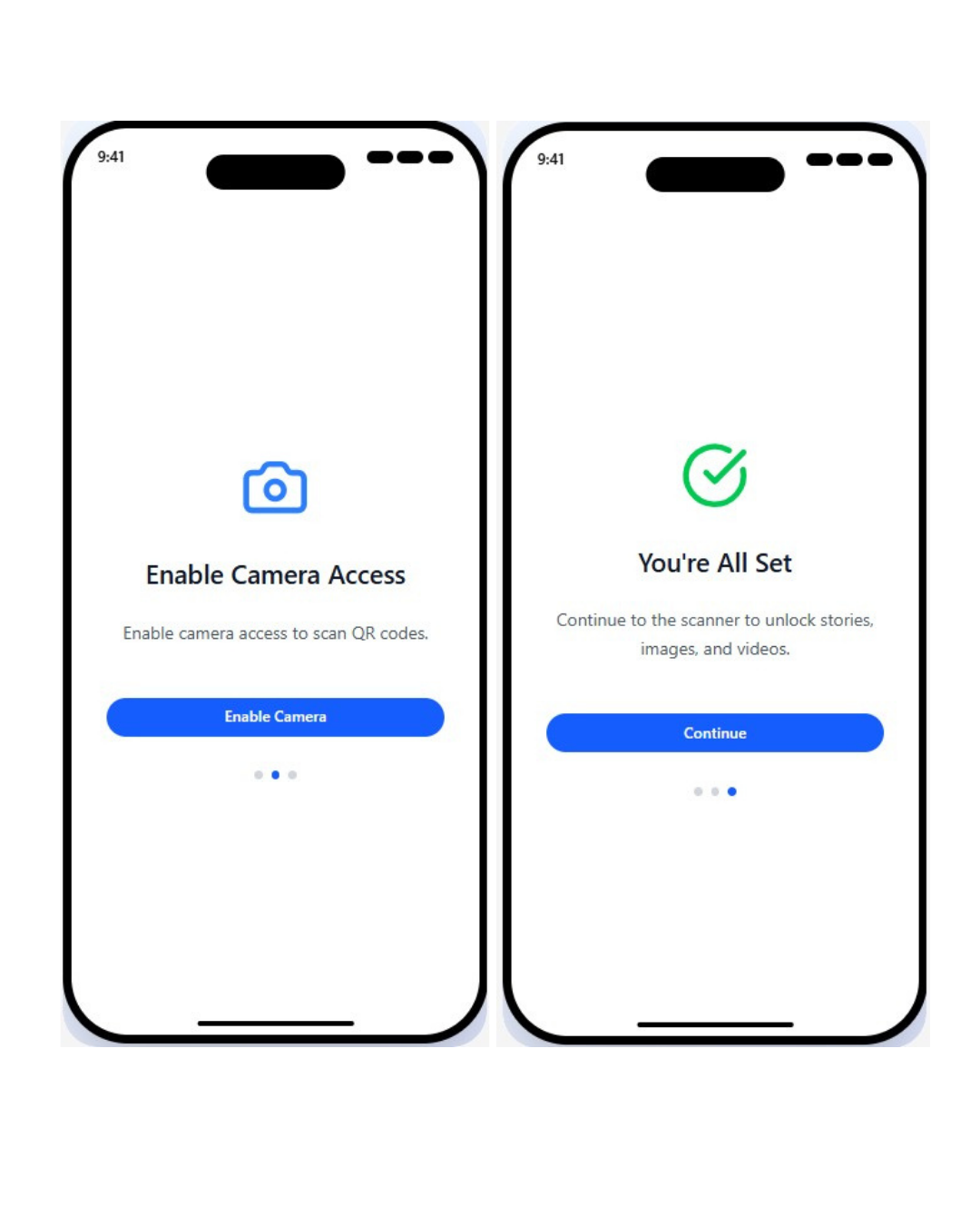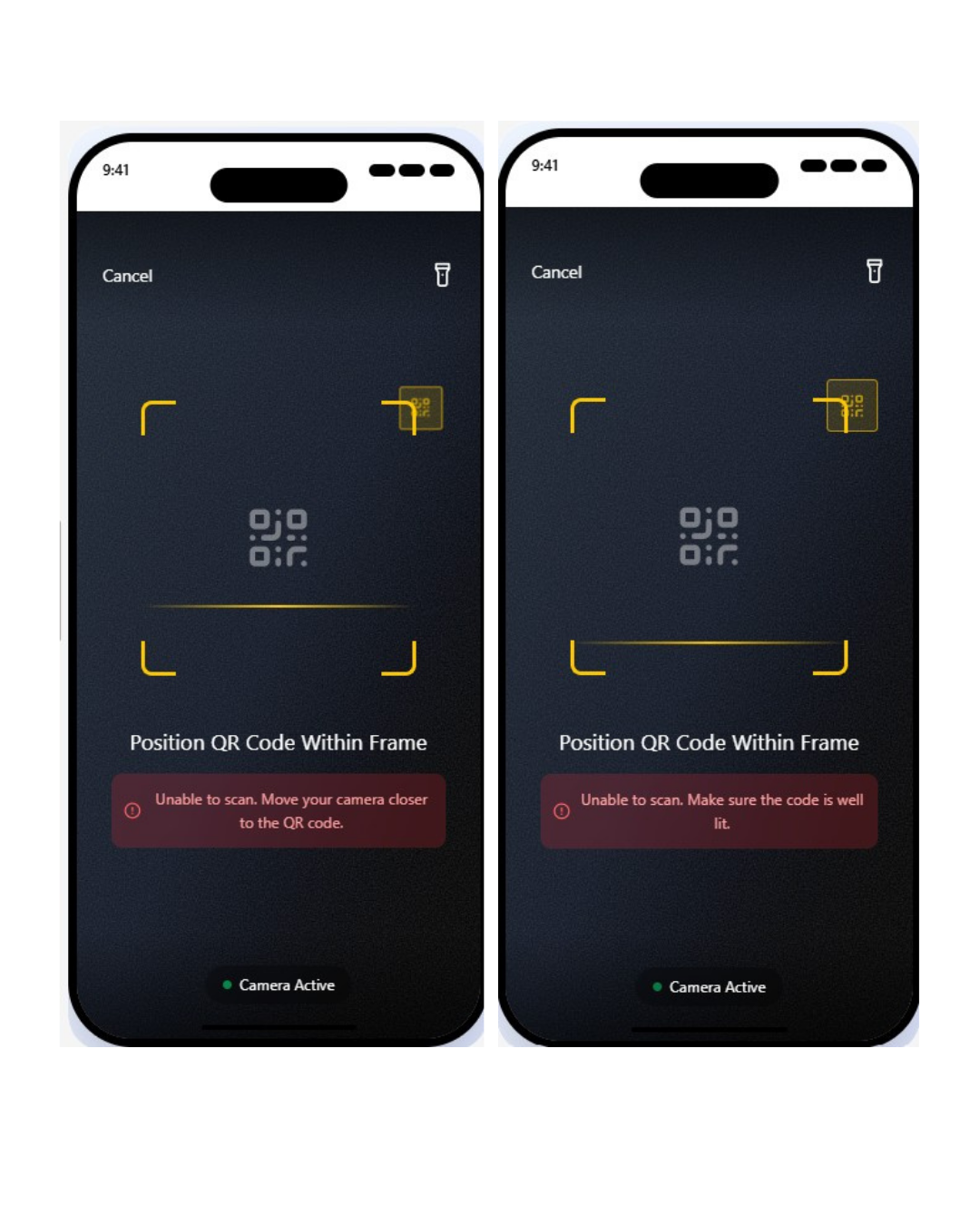UX Microcopy for Visitor Onboarding
OWLS App
Context
I worked at Intuitive Research and Technology Corporation where I collaborated with a small team of software engineers to create the OWLS app. The app enabled visitors of the U.S. Space & Rocket Center in Huntsville, Alabama to use their mobile devices to scan exhibit QR codes which revealed additional content including stories, images, and videos about each display. The team did not have a dedicated UX writer, so I was responsible for creating all onboarding and in-app copy.
I created onboarding prompts, tooltips, and error messages for a museum app that guided visitors through scanning QR codes and exploring exhibits. Made navigation intuitive and errors easier to resolve.
My Work
Before writing new copy, I reviewed user feedback from early prototype testing and walked through the existing flow myself to pinpoint where visitors were getting stuck. I met with the software engineering team to discuss user pain points and clarify how camera permissions worked. Using these insights, I redesigned the onboarding flow and microcopy to make setup and scanning feel effortless for first-time users. I then led microcopy reviews with the team, implemented requested changes, and validated that the revised flow matched user needs and technical requirements. My work included the following:
Onboarding Flow: I removed the “Skip” button on the enable camera screen to eliminate confusion and ensure users moved through a single, logical path.
Microcopy and Tooltips: Wrote clear, conversational microcopy that guided users through setup and scanning. Replaced vague language like “Scan failed” with actionable messages such as “Move closer to the QR code.”
Error Messaging Framework: Created a consistent framework for all error and success states, using a three-part structure: state the issue, explain what happened, and tell users how to fix it.
Copy Implementation Documentation: Built annotated copy decks in Microsoft Word and PowerPoint, pairing each screen with its corresponding microcopy and interaction notes. This made it easy for engineers to implement text accurately without needing a separate UX design tool.
Problem
Early prototype testing showed that visitors often felt unsure about how to get started. Key issues included:
The camera enable screen included a “Skip” button that let users bypass setup and still continue scanning, which made the permissions step confusing and unnecessary.
Uncertainty about how to enable the camera and begin scanning.
If scanning failed due to distance or lighting, the error message read “Scan failed", without giving a reason or guidance on what to do next.
These issues created a confusing first-time experience and left users without clear direction on how to start or troubleshoot scanning.
Outcome
The updated onboarding flow gave users a simple, self-explanatory experience from app launch to first successful scan. The new microcopy helped users correct scanning errors without outside help, while the annotated content documentation provided developers with ready-to-use text and design context.
Impact
After implementation, visitors could begin exploring exhibits without confusion or extra instruction. Removing the skip button made setup more logical, and the improved error messages reduced frustration during scanning.



